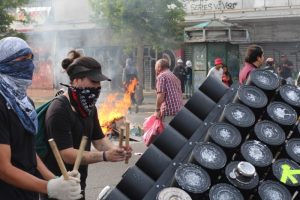Adam Basanta, an artist, composer and performer of experimental music, likes to turn sound technologies into kinetic and sculptural installations. The way he handles sound objects can be fairly hostile, ironic or even poetical.
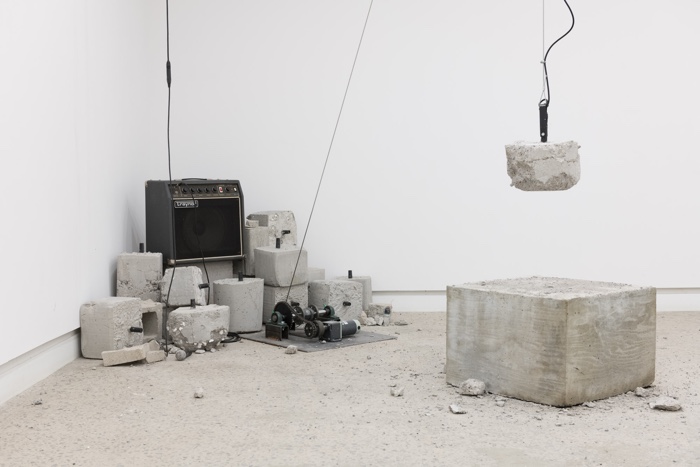
Adam Basanta, A Large Inscription, A Great Noise, 2019. Photo by Paul Litherand
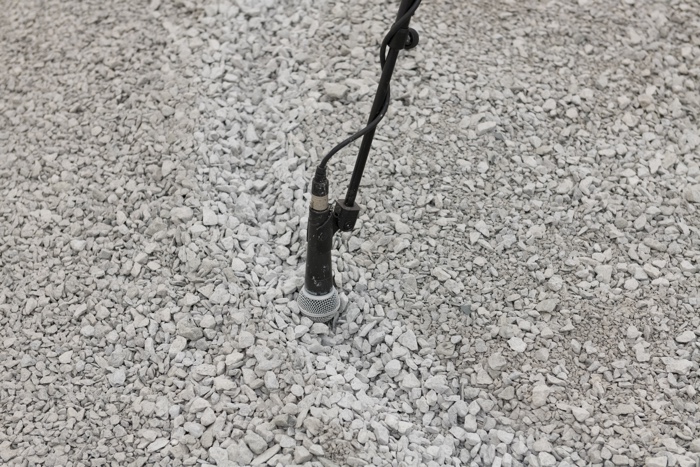
Adam Basanta, A Large Inscription, A Great Noise, 2019. Photo by Paul Litherand
In his ongoing exhibition at Optica Centre d’art contemporain in Montreal, the artist went for the rude and rough treatment.
A Large Inscription, A Great Noise investigates notions of historical time and time-keeping, cycles of construction and destruction in an era of mass communication, automization through mechanical kineticism, and the modalities of its resulting trace.
In “A Large Inscription”, a microphone is slowly dragged over gravel; “an indispensable instrument of the modern demagogue is knocked over like an overrun statue,” writes the artist. That might explain why i found the sound produced so physical but also strangely satisfying.
“A Great Noise”, however, is more dramatic. A microphone encased in a 40kg cement block is quietly raised towards the roof, left to hover for a second and then it drops and slams against a large concrete base. Bits and pieces chipped off the block scatter around the space. The block slowly rises again and the process is repeated over and over again.
Adam Basanta, A Large Inscription, A Great Noise, 2019. Solo exhibition at Optica Centre d’art contemporain, Montreal
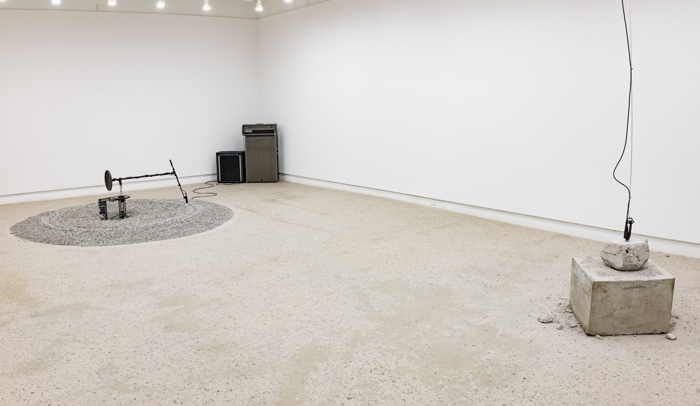
Adam Basanta, A Large Inscription, A Great Noise, 2019. Photo by Paul Litherand
I caught up with the artist as he had just finished installing his work:
Hi Adam! The two works are in the same room. How do they connect or maybe disconnect? Are they meant to always work together?
While both works are independent pieces, they are interrelated and very much designed to be in dialogue. They both try to address the same set of questions, each in their own way: how do we conceive of and represent time, its passage, and its organization into a history? How does the application of technology – mechanical power, automatization, networked communication – shape this understanding and the world around us?
In A Large Inscription, time is envisioned as circular and infinite. A trace never truly begins or ends, it just shifts forward, slowly displacing whatever is in its path. Historical moments (the microphone placement alludes to the toppled statue of a dictator) while cathartic, are repeated, stuck in a loop. The world keeps on turning. On the other hand, A Great Noise divides time into distinct units: the 40kg block of cement (in which a microphone is embedded) is pulled up every 5 minutes, and then dropped to the ground from a height of ~1.5 to 2m. Time is divided into measured intervals, but also moves forward as we witness cause and effect, the block slowly breaking after repeated impacts as days and weeks pass by.
This conceptual dialogue is mirrored sonically, with one continuous layer slowly evolving texturally, occasionally punctuated by distinct, violent events.
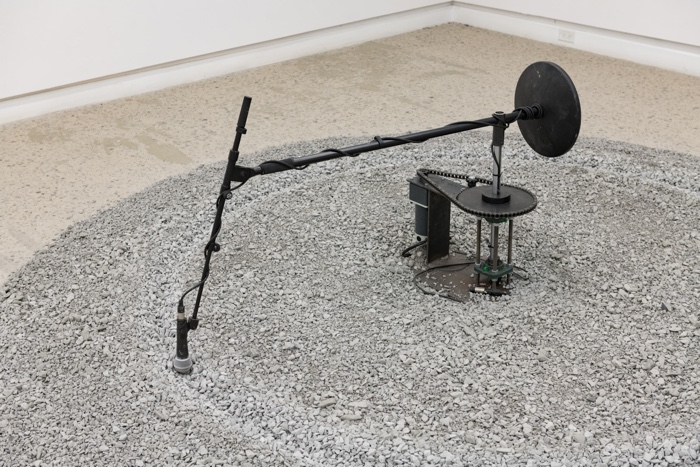
Adam Basanta, A Large Inscription, A Great Noise, 2019. Photo by Paul Litherand
What do you mean when you write the work investigates the “cycles of construction and destruction in an era of mass communication”?
I feel like we have a very confused relationship to time and temporality in the present moment. On the one hand, we have an immense degree of access to the past, where we can google an event that occurred yesterday or 1500 years ago with the same ease. History is flattened, and exists firmly in the present as an artifact of our time. On the other hand, our notions of the future are dominated by dystopic visions of impending ecological collapse and the autocratic techno-state. The present is changing at a breakneck speed, a speed we are able to follow using our various technological devices and platforms, but somehow this overload of information gives a sensation of stasis and déjà vu. A country is destroyed, a forest is chopped down, a building is torn down for new construction; is any of this new or have I already read about it? Are we progressing or regressing, or staying in the exact same place we’ve always been? There is a sense of malaise in how we relate to time, and while the works don’t address these issues explicitly, as allegorical re-interpretions of the myth of Sisyphus, they speak to this phenomena.
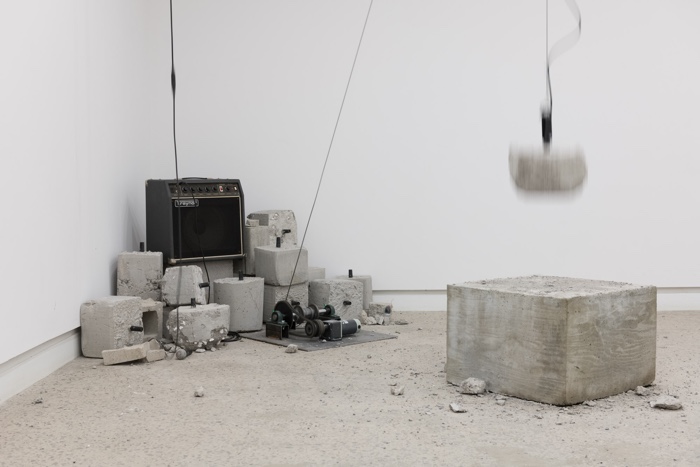
Adam Basanta, A Large Inscription, A Great Noise, 2019. Photo by Paul Litherand
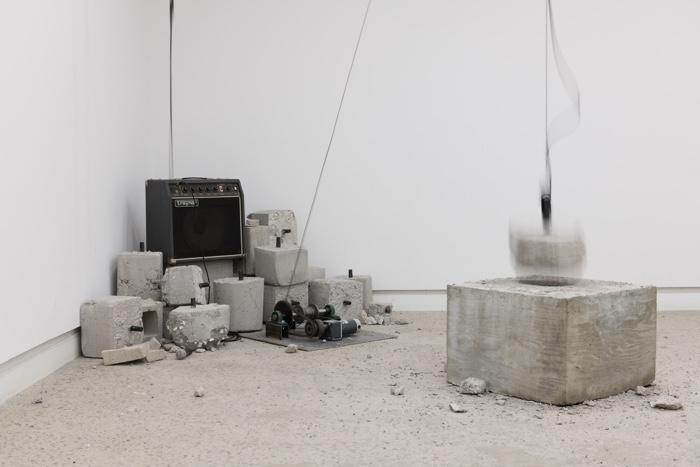
Adam Basanta, A Large Inscription, A Great Noise, 2019. Photo by Paul Litherand
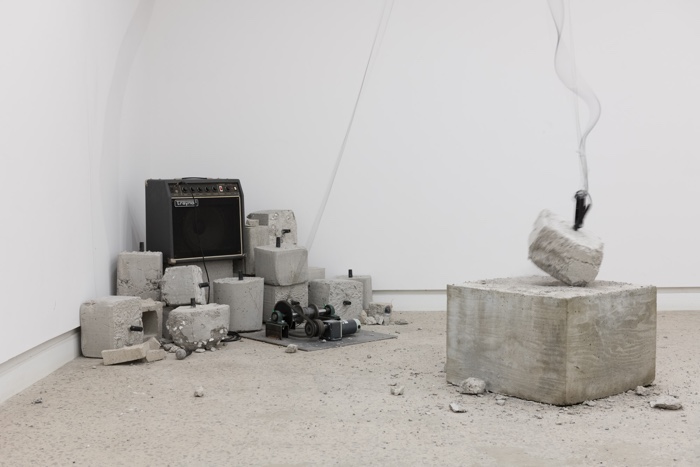
Adam Basanta, A Large Inscription, A Great Noise, 2019. Photo by Paul Litherand
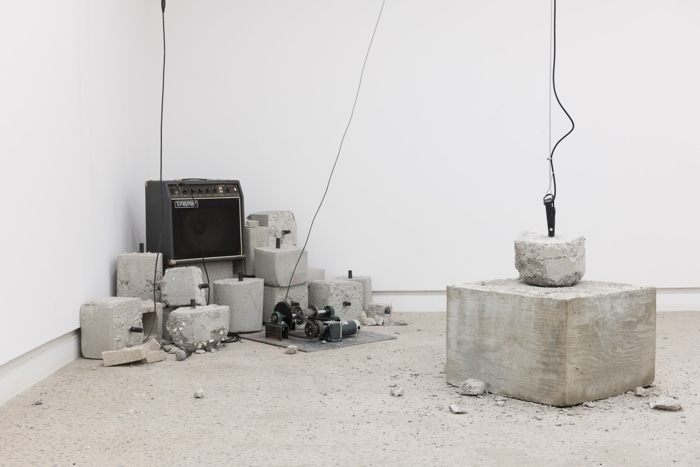
Adam Basanta, A Large Inscription, A Great Noise, 2019. Photo by Paul Litherand
There’s some suspense in A Great Noise, a tension that’s only briefly released when the block finally hits the base. What determines the speed of the movements? is it random? Regular? Does it respond to specific rules?
I’m told that watching this work is a very tense experience! The pulling up of the block takes approximately 2 minutes. It is intentionally slow but the speed also transmits the sense of mechanical and kinetic power at hand. The block is pulled up to a variable height between 1.5-2m above the ground. It is then held in place for between 10-30 seconds before the load is released and drops to the ground by the force of gravity. So even if you’ve seen the block drop, there is always a sense of danger about it as it pulls higher or lower, anticipation to see if it drops right away or is left suspended for a longer interval, will a piece of the block break off, etc. Another layer of indeterminacy is in the manner in which the blocks break over time: as pieces chip off, the balance of the block changes, and as the block hits the cement differently, we can attend to sonic variations. Once a cement block breaks entirely – this takes about 2 to 3 weeks – it is replaced by a new cast cement block, and the process repeats.
Adam Basanta, All We’d Ever Need Is One Another, 2018
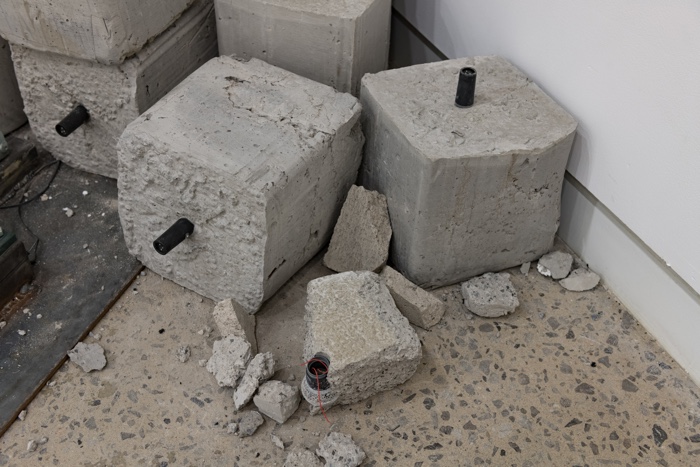
Adam Basanta, A Large Inscription, A Great Noise, 2019. Photo by Paul Litherand
I associate your practice with elegant electronic devices, not with rough material like gravel and concrete. What is the appeal of gravel and concrete to you?
Well, I suppose all work exists on a spectrum! The last piece I made, All We’d Ever Need Is One Another, was very much about digital and computational labour (most of which occurs inside a computer), so it felt right to respond with this new project and make something very physical, heavy, and rough.
But the fascination with gravel and concrete specifically is in some ways quite personal. I live in Montreal, a city which is constantly under construction: in order to repair the effects of the harsh winter, to repair decaying infrastructure, to demolish an old warehouse for the next condominium. Construction is present and seemingly never-ending, but at the same time, it is slowly changing our cities. This change occurs by applying massive amounts of automated kinetic energy on to an already “built environment” and it seems a very apt summary of many human endeavours throughout history. And so cement and gravel are materials which are constantly around me, and I’m quite fascinated with the processes and machines which engage with these materials.
These construction materials are also an indicator of opportunity and change in some ways. For instance, my studio has been in the midst of a massive construction project for over a year, which will probably last another 2 years. And while it can be annoying at times, this construction creates a certain amount of chaos; chaos that is necessary for my existence there. I can find a my place in the interstice, a little ecosystem of cheap rent, a sense of freedom and opportunity created and sustained by this chaos. This interstice will close as the construction of a new ecosystem draws to an end in a year or two, and I will have to find a new place. Another cycle.
Thanks Adam!
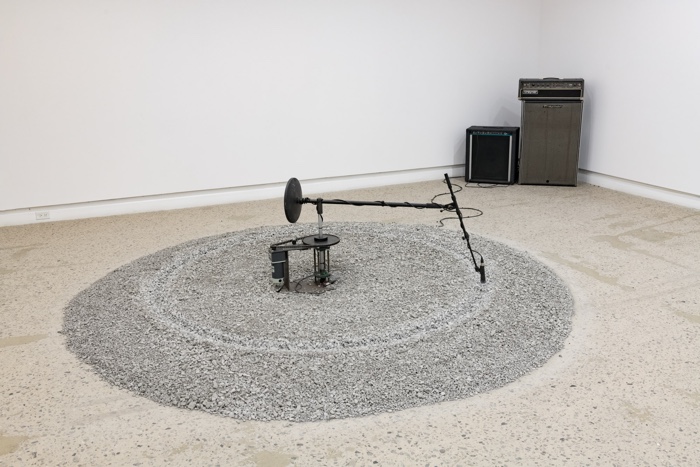
Adam Basanta, A Large Inscription, A Great Noise, 2019. Photo by Paul Litherand
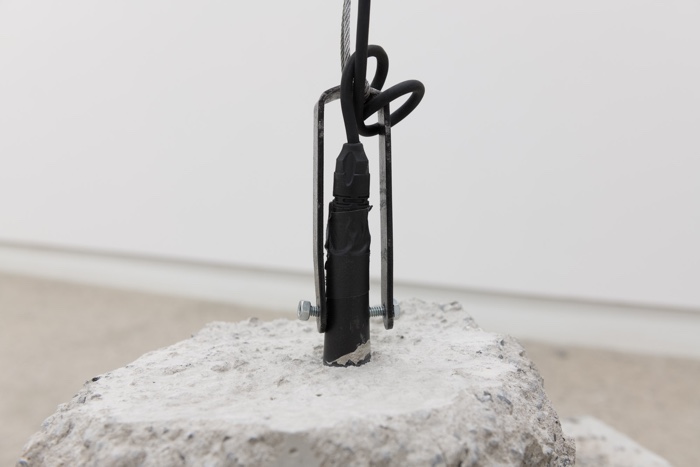
Adam Basanta, A Large Inscription, A Great Noise, 2019. Photo by Paul Litherand
Adam Basanta, A Large Inscription / A Great Noise is at Optica in Montreal until 15 June 2019. On 25 May, Adam Basanta will have a public conversation with Eli Kerr at OPTICA.
Previous works by the artist: The sound of empty space.



